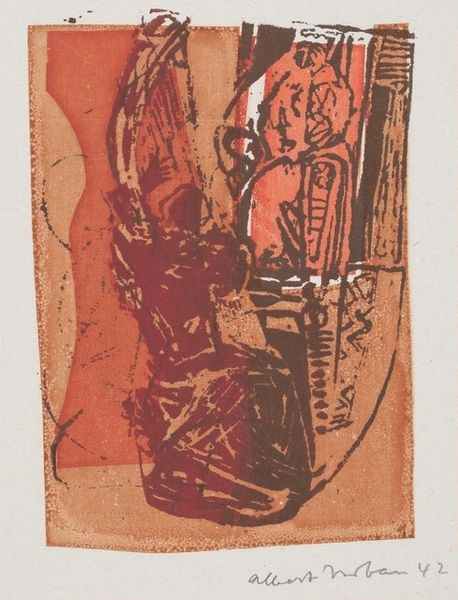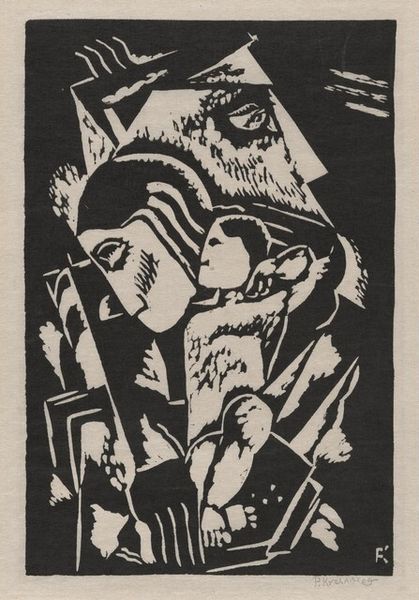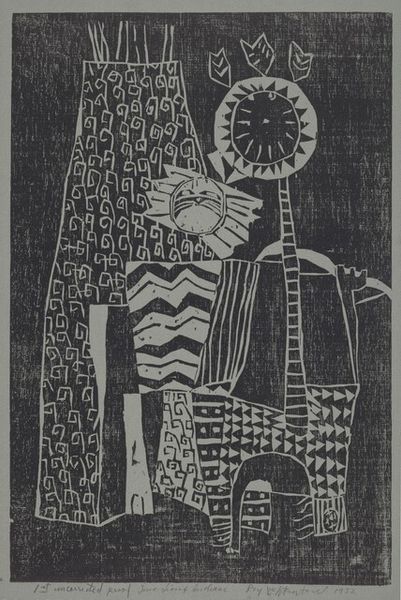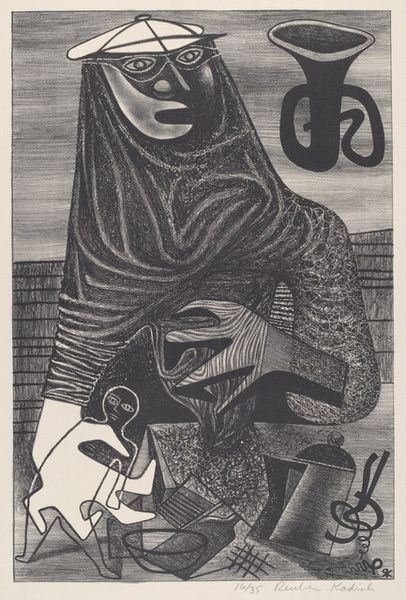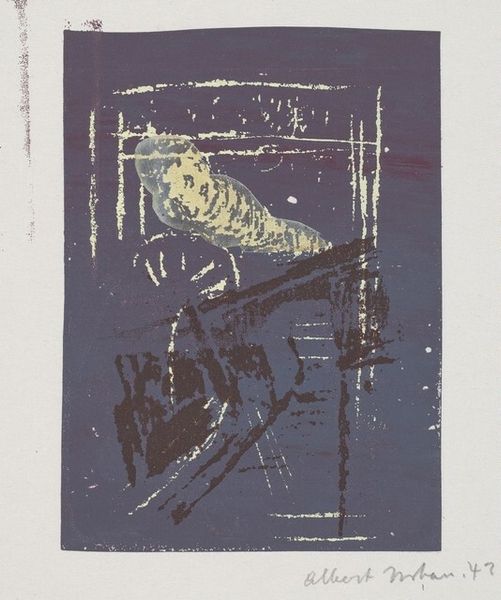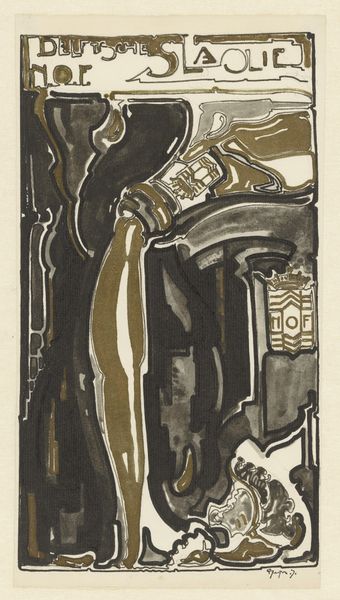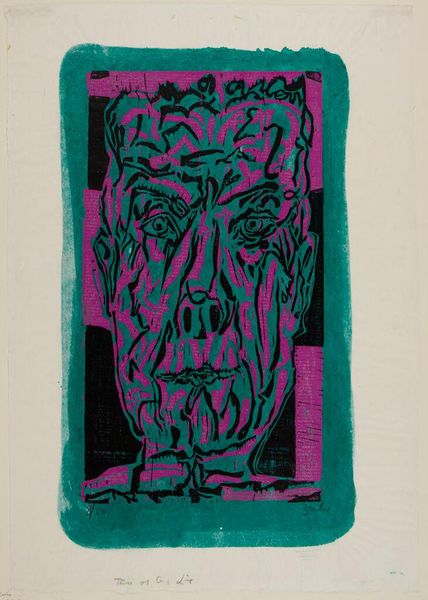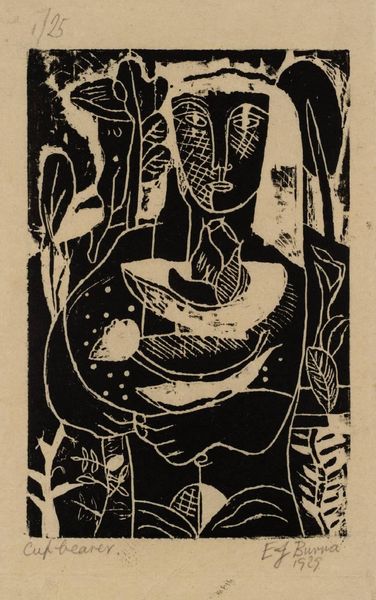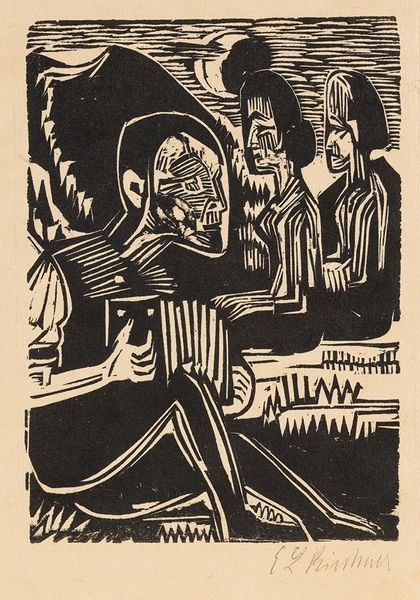
print, woodcut
#
portrait
#
narrative-art
# print
#
caricature
#
figuration
#
woodcut
Dimensions: image: 45.1 x 32.7 cm (17 3/4 x 12 7/8 in.) sheet: 61 x 48.9 cm (24 x 19 1/4 in.)
Copyright: National Gallery of Art: CC0 1.0
Curator: The bold graphic quality immediately strikes me. The heavy blacks offset by that warm ochre. Editor: Agreed. We are looking at James Lesesne Wells' "Watusi Family" from 1988, a woodcut print that exemplifies his exploration of African themes and his mastery of the medium. It has this amazing stylized narrative, and I would place Wells’ artistic contribution within a larger, global history of Black representation, both pre- and post-colonial. Curator: Thinking of the actual labor involved, you really see it in the piece. Wells coaxes out different textures through his carving. There’s the smooth, almost uninterrupted blackness, for example, then lines etched meticulously close together. Considering how painstaking the process of woodcut is, there is so much detail here, even as it still captures a strong narrative element. Editor: Exactly. In terms of social context, this was produced during a moment of rising calls for representation of Black identities. Considering his era and personal commitments, his dedication to education and Black representation should be examined. He helped forge crucial intergenerational dialogues regarding identity and the role of the Black artist within larger liberation struggles. Curator: There’s also something powerful in how he represents the family unit, presenting them not as individuals, but almost as architectural blocks, as vital and unbreakable structures. What did prints like these mean to the communities who may have owned or accessed these prints in the late 80s? And I keep coming back to the use of black ink as a political statement. Editor: Absolutely. The print embodies these conversations in its formal choices, material presence, and mode of dissemination. In these limited-edition prints, there’s always a unique object, yes, but Wells always kept it aligned with the ethos of art for the masses. Curator: That intersection—individual craft with collective access—makes it special, and really lets you consider the labor and larger implications of Wells’ output. Editor: It's through this interplay of materials and messaging that we can see “Watusi Family” as not only aesthetically engaging but also as a testament to community strength.
Comments
No comments
Be the first to comment and join the conversation on the ultimate creative platform.
